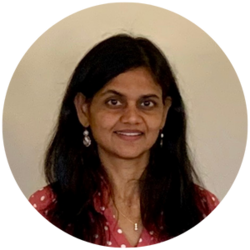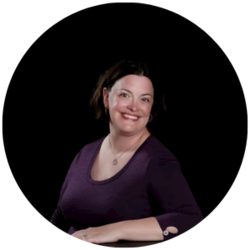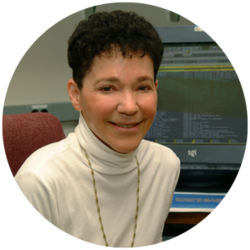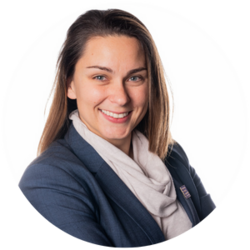
Feb. 11 was International Women and Girls in Science Day. To celebrate, we co-hosted a panel discussion with Woman to Woman Mentoring where successful women in science discussed their chosen career paths, allyship and mentorship in science and strategies for advancement.
Keynote speaker

Carla Williams, Ph.D.
Associate Professor of Medicine & Public Health, Howard University
Interim Director, Howard University Cancer Center, Graduate School
Carla Williams received her Ph.D. in clinical psychology from Howard University. She is currently Associate Professor of Medicine and Public Health and Interim Director of the Howard University Cancer Center. Her work centers around understanding and reducing cancer-related health disparities. Her research activities emphasize engaging communities that have not been adequately represented in research. Dr. Williams works with community health leaders to promote individual adoption of healthy lifestyle behaviors as well as population-level change in the environment, health policies, and health systems.
Since 2010, Williams’ collaborative research efforts have resulted in the expansion of her role to function as an Executive Scientist. In this capacity, she helps to build research teams within and across institutions to promote collaborative research. She has led the development of a regional symposia to equip scientists and community health advocates with the skills to maximize the impact of collaborative research.
In her teaching roles, Williams has developed new training paradigms to enhance students understanding and utilization of evidence-based practice. She has also incorporated the use of reflective exercises to promote learning synthesis and integration. Most recently, she has worked to develop a combined didactic and practice-based course that builds skills for community engagement as a key discipline in public health, health care research, and health policy.
Panelists

Mary Kearney
Senior Scientist and Head, Translational Research Section
Deputy Program Director, HIV Dynamics & Replication Program, National Cancer Institute
Mary Kearney received her B.A. in Biochemistry from Hood College in 1996 and her M.S. in Biomedical Science from Hood College in 2001. In 2008, she received a Ph.D. in Biology from Catholic University and was awarded the Benedict T. DeCicco Award for Excellence in Graduate Research. Dr. Kearney has been an integral part of the HIV Dynamics and Replication Program since 2001.
In 2008, Dr. Kearney was promoted to Head of the Translational Research Section where she oversees a team that investigates viral genetics and expression in vivo, the sources of persistent HIV during antiretroviral therapy (ART), the sources of rebound viremia after stopping ART, the mechanisms for maintaining the HIV reservoir, and the mechanisms for the emergence of drug-resistance mutations in HIV and other RNA viruses. Key discoveries include demonstrating that ART is fully effective at blocking HIV replication in vivo, that HIV persists through cellular proliferation of cells that were infected prior to ART initiation, and that HIV has differential expression among cells within infected cell clones.
Dr. Kearney is the recipient of four Bench-to-Bedside Awards, three NIH Intramural AIDS Targeted Antiviral Program Awards, a U.S.–South Africa Initiative U01 Grant, an Office of AIDS Research Congressional Award, and an NCI Flex Technology Award. In 2019, she was promoted to Senior Scientist and in 2021 to Deputy Program Director of the HIV Dynamics & Replication Program.
Woman in science role model
“A famous woman in science who I view as a role model is Dr. Beatrice Hahn at the University of Pennsylvania. Dr. Hahn discovered the origin of HIV and traced its spread and evolution in humans using unique strategies, among many other important discoveries. She made these discoveries when women still had very little support in science and while raising four children. She is very supportive of other women in science.”

Uma Mudunuri
Acting Director, Advanced Biomedical Computational Science Group
Uma Mudunuri works in translational science, data mining and integration and rare disease research. She has 20 years of experience working in science.
Mudunuri graduated with a bachelor’s degree in genetics, microbiology and chemistry. She has a Master of Science in biotechnology from India and another in bioinformatics from the University of Pennsylvania.
Woman in science role model
“Dr. Barbara McClintock - She was one of the first scientists I read about as a genetics undergrad. Dr.McClintock discovered transposons, one of the most fascinating methods of DNA transfer. She also won the Nobel prize in Physiology in 1983.”

Stephanie Mummert, Ph.D.
Primary Patent examiner, United States Patent and Trademark Office
Stephanie Mummert is a life-long Maryland resident who grew up in the Baltimore area. She earned a bachelor’s degree in biology from Hood College in 1998 and earned a Ph.D. from Johns Hopkins School of Medicine in 2005 in the Biochemistry, Cell and Molecular Biology program.
During graduate school, Dr. Mummert became interested in careers outside of academia and explored careers in technology transfer and intellectual property before joining the USPTO. She has worked with the USPTO since 2005. Dr. Mummert is a Primary Patent examiner and examines patent applications in biotechnology with a particular focus on nucleic acid amplification based devices and methods.
Dr. Mummert lives in Columbia, MD with her husband and daughter. Stephanie has passed on her love of science and technology to her daughter who loves to code and explore the natural world.
Woman in science role model
"My role model is Rosalind Franklin. Learning of the contributions she made towards understanding the structure of DNA, without the accolades and acknowledgment she deserved, really shaped my approach to science as a woman and as a person. Science is a collective effort and innovation involves everyone who contributes, not just those in the spotlight."
The views and comments expressed herein are solely the opinion of the author, do not reflect the performance of duties in the author’s official capacity, and are not endorsed by, nor should be construed as, any viewpoint official or unofficial of the United States Patent and Trademark Office. The author confirms to the best of his or her knowledge that no information contained herein is privileged, confidential or classified

Ruth Nussinov, Ph.D.
Senior Prinicipal Scientist and Head, Computational Structural Biology Section
Born in Rehovot, Israel, Ruth Nussinov pioneered the “conformational selection and population shift” (1999) as an alternative to the “induced fit” text-book model to explain molecular mechanism of recognition and posited that population shift underlies allosteric regulation. She extended this pre-existing ensemble model to catalysis (2000), and oncogenic activation, contributing to extraordinary advancements in understanding structure and function.
Dr. Nussinov received her Ph.D. in 1977 from Rutgers University and did post-doctoral work in the Structural Chemistry Department of the Weizmann Institute. Subsequently she was at the Chemistry Department at Berkeley, the Biochemistry Department at Harvard, and a visiting scientist at the NIH.
In 1984 she joined the Department of Human Genetics, at the Medical School at Tel Aviv University. In 1985, she accepted a concurrent position at the National Cancer Institute of the NIH, Leidos Biomedical Research, where she is a Senior Principal Scientist and Principle Investigator heading the Computational Structural Biology Section.
She has authored over 700 scientific papers. She is the Editor-in-Chief of Current Opinion in Structural Biology, was the Editor-in-Chief of PLoS Computational Biology, is currently the Editor-in-Chief of Current Opinion in Structural Biology and Associate Editor and on the Editorial Boards of a number of journals.
She is a frequent speaker in Domestic and International meetings, symposia and academic institutions, won multiple awards and elected fellow of several societies, and has been twice a highly cited researcher. Her National Cancer Institute website gives further details.
Woman in science role model
“I was influenced by a cousin of my father (whom I called aunt) who was a bacteriologist.”

Jana Ognjenović, Ph.D.
Team lead, Advanced Cryo-Electron Microscopy Technology Group
Jana Ognjenović is currently head of the Advance Cryo-EM Technology group at the Frederick National Laboratory for Cancer Research. Her team explores emerging platforms and develops methodologies for both single-particle analysis and cryo-electron tomography, with an emphasis on pursuits that have the potential to make cryo-EM a more widely accessible technique. Her group’s research interests include signal transduction and the regulation of gene expression, with the goal of using high-resolution cryo-EM structures to gain mechanistic insights and to inform drug design efforts against intractable targets.
Dr. Ognjenović has been working in structural biology for the past 13 years. She received her bachelor's degree in biochemistry and Ph.D. in biochemistry from the University of Belgrade in Serbia. She conducted postdoctoral studies in X-ray crystallography at University of Illinois, Chicago and postdoctoral studies in Cryo-EM with the National Institutes of Health in Bethesda, Maryland.
Woman in science role model
"Among many impressive female scientists, Dorothy Hodgkin stands out as my role model. She was one of the trailblazers in the early days of the development of the X-ray crystallography method. Her accomplishments include work on determining the structures of important biochemical substances, such as penicillin, insulin, and vitamin B12, for which she won a Nobel Prize. In addition to her personal achievements, she put forth a lot of effort in helping scientists in developing countries, including China and India."
Moderator

Maggie Scully, Ph.D.
Partnership Development Manager, Partnership Development Office
Maggie Scully started her career as a scientist after getting her bachelor's degree in bioengineering from Lehigh University and her master's degree and Ph.D. in biomedical engineering from Stony Brook University. For the past six years, Dr. Scully has worked in alliance management and partnership development.
Dr. Scully is an author in more than 30 articles with more than 3,200 overall citations. In 2020. Dr. Scully received a NCI Director’s Award as a team member organizing the National Cancer Institute and Frederick National Laboratory Technology Showcase. In 2021, she received a Federal Lab Consortium State and Local Economic Development Award as a team member for the Technology Showcase.
Woman in science role model
"More of an admiration rather than a role model – Marie Skłodowska Curie. A true, unapologetic pioneer! Pioneered the field of radiochemistry, discovered polonium and radium, first person to win the Nobel Prize in two scientific fields, first woman to win a Nobel Prize, driven to apply her discoveries for care (developing mobile units to provide X-rays during WWI), fueled a family legacy, and she’s Polish like me.
P.S. How cool to have an element named after Poland, when it wasn’t an independent country at the time? She used her platform to make a statement."
Media Inquiries
Mary Ellen Hackett
Manager, Communications Office
301-401-8670
